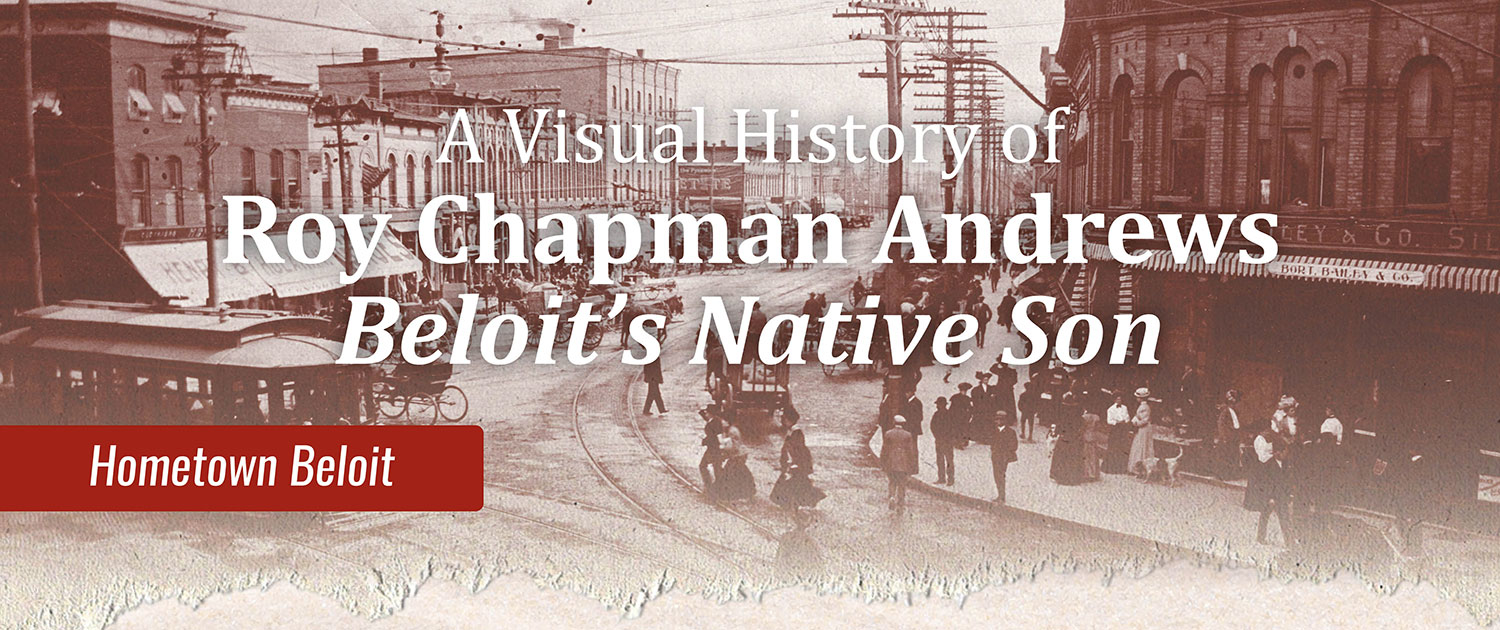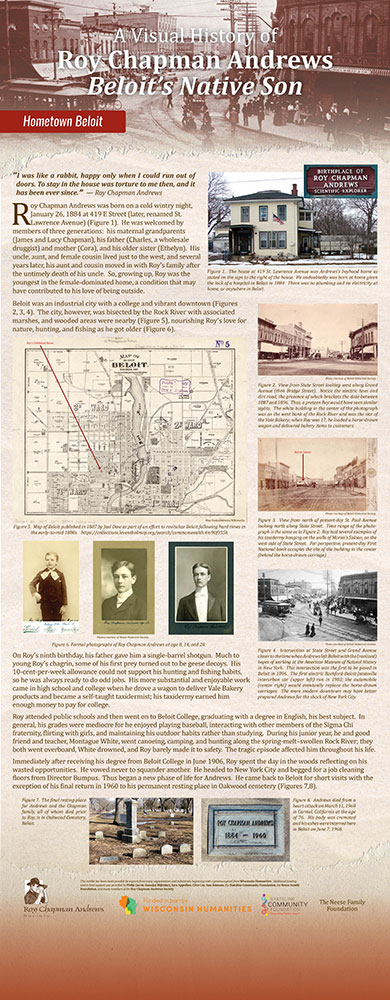Hometown Beloit
“I was like a rabbit, happy only when I could run out of doors. To stay in the house was torture to me then, and it has been ever since.”
~Roy Chapman Andrews
Roy Chapman Andrews was born on a cold wintry night, January 26, 1884 at 419 E. Street (later, renamed St. Lawrence Avenue) (Figure 1). He was welcomed by members of three generations: his maternal grandparents (James and Lucy Chapman), his father (Charles, a wholesale druggist) and mother (Cora), and his older sister (Ethelyn). His uncle, aunt, and female cousin lived just to the west, and several years later, his aunt and cousin moved in with Roy’s family after the untimely death of his uncle. So, growing up, Roy was the youngest in the famale-dominated home, a condition that may have contributed to his love of being outside.
Beloit was an industrial city with a college and vibrant downtown (Figures 2,3,4). The city, however, was bisected by the Rock River with associated marshes, and wooded areas were nearby (Figure 5), nourishing Roy’s love for nature, hunting, and fishing as he got older (Figure 6).
On Roy’s ninth birthday, his father gave him a single-barrel shotgun. Much to young Roy’s chagrin, some of his first prey turned out to be geese decoys. His 10-cent-per-week allowance could not support his hunting and fishing habits, so he was always ready to do odd jobs. His more substantial and enjoyable work came in high school and college when he drove a wagon to deliver Vale Bakery products and became a self-taught taxidermist; his taxidermy earned him enough money to pay for college.
Roy attended public schools and then went on to Beloit College, graduating with a degree in English, his best subject. In general, his grades were mediocre for he enjoyed playing baseball, interacting with other members of the Sigma Chi fraternity, flirting with girls, and maintaining his outdoor habits rather than studying. During his junior year, he and good friend and teacher, Montague White, went canoeing, camping, and hunting along the spring-melt-swollen Rock River; they both went overboard, White drowned, and Roy barely made it to safety. The tragic episode affected him throughout his life.
Immediately after receiving his degree from Beloit College in June 1906, Roy spent the day in the woods reflecting on his wasted opportunities. He vowed never to squander another. He headed to New York City and begged for a job cleaning floors from Director Bumpus. Thus began a new phase of life for Andrews. He came back to Beloit for short visits with the exception of his final return in 1960 to his permanent resting place in Oakwood cemetery (Figures 7,8).


